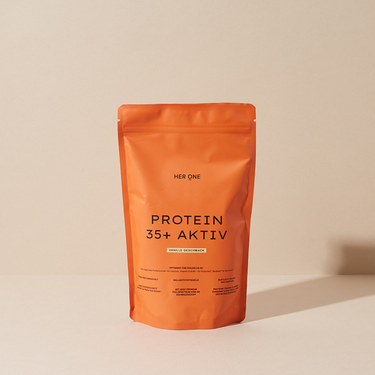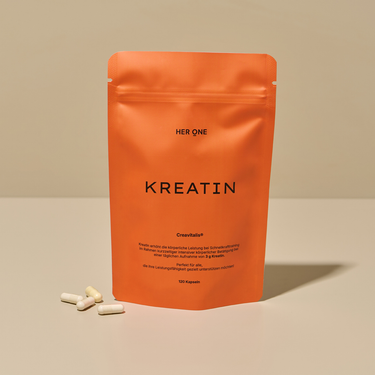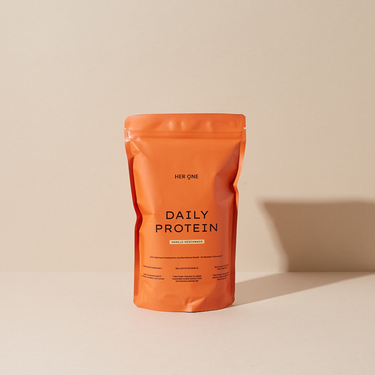from Züleyha Aydin
Many people suffer from deficiency symptoms: Vegans often take in too little vitamin B12 from their food, and if sunlight is missing, many people's vitamin D levels plummet. But how to get around the whole thing?
Supplements sound like a good alternative. The market is full of products, from natural powders to synthetic vitamin bombs that cover the daily requirement many times over. But not everything that seems healthy has to be. How do natural vitamins differ from synthetically produced ones?
Content:
- At first glance, no matter?
- Higher bioavailability equals better?
- Why nature is unbeatable
- Overdose: The dose makes the poison
- What is the alternative to synthetic vitamins?
- Natural powders: the healthy option
- Distinguish natural from synthetic vitamins
1. no matter at first sight?
Wanting to eliminate a vitamin deficiency is not bad per se, it's just that most dietary supplements contain vitamins from the laboratory. In terms of molecular structure, synthetically produced vitamins and minerals do not differ from natural ones: At the atomic level, the structure and composition of natural and synthetic vitamins are identical.
The simplest example is vitamin C, which is often contrasted with ascorbic acid. Both terms refer to the same molecule and are merely synonyms. So, at first glance, the origin of the vital substances seems to be irrelevant for the human body, because they are built in exactly the same way.
2. higher bioavailability equals better?
At second glance, however, it can be seen that natural and synthetic vitamins have a different absorption capacity, also called bioavailability. Synthetically produced vitamin preparations already offer large amounts of the active ingredient in small portions, which sounds healthier, but can lead to an overdose more quickly.
In nature, vitamins are more complex bound and come with trace elements, which is the real effect on the human body. Although nutrients must first be broken down so that the body can access the vitamins, the natural cocktail of different micronutrients is crucial the health-promoting effect. And when the dose is considered, it must not be forgotten 'An apple a day keeps the doctor away' - not ten.
3. why nature is unbeatable
The decisive factor is that micronutrients never occur in nature in isolation. It is the complex interplay of naturally occurring vitamins with minerals and accompanying substances, such as secondary plant compounds, that accounts for the actual health-promoting effect.
3.1 Example: Vitamin C
Persistent vitamin C deficiency causes the disease scurvy. Symptoms of the disease include bone pain and gum problems with subsequent tooth loss. Scurvy can be cured by administering vitamin C. However, only natural vitamins produce a lasting effect, not synthetically produced ones.
Citrus fruits are not only rich in vitamin C: the additional trace elements potassium and calcium, stimulate cell growth and strengthen bones and teeth. Accordingly, by eating citrus fruits can be treated and alleviated not only cause of scurvy, but also the symptoms.
4. overdose: the dose makes the poison
When supplementing vitamins, the following applies: More does not equal better. Synthetic dietary supplements contain high doses of isolated vitamins or minerals. With many preparations, one portion already corresponds to the recommended daily dose. If additional nutrients are taken in through the diet, the maximum daily dose can quickly be exceeded and there is a risk of overdose.
Many consumers fear an undersupply of essential vitamins and minerals. However, oversupply is just as big a problem. Because, as is true elsewhere in medicine and in life, the dose makes the poison.
4.1 Example: Vitamin D
Vitamin D is the best example in this case, as it illustrates that no overdose is possible in a natural way. Because: Vitamin D is formed by the body itself. And what the body produces itself cannot lead to an overdose in a natural way. But high-dose preparations can.
Normally, the human body produces vitamin D with the help of the UV rays of sunlight. The enzymes in our skin, which are responsible for the production, operate an ultraviolet-induced synthesis when sunbathing, i.e. they work only when the UV light is given, but then abundantly.
Vitamin D is stored by the body in fatty tissue, as it is a fat-soluble vitamin. This is also quite good in itself, since we get more sun in the summer than in the winter, but of course we need vitamin D all year round.
Vitamin D produced by the body lingers for up to 8 hours in the skin layers and the fat cells they contain, but is itself also incredibly sensitive to light. Vitamin D that remains exposed to the sun is degraded to lumisterol and tachysterol. Both products have no effect on our body. A healthy cycle, then.
In contrast, vitamin D, which is absorbed through preparations, does not see sunlight and cannot be filtered by the described circulation. On the contrary, it ends up directly in the stomach and through digestion in the fatty tissue and there it can be stored, for years.
This makes the overdose all the more serious. If the excessive intake happens more frequently, the body usually reacts with nausea, headaches or a feeling of dizziness, but this does not necessarily have to happen. If you continue to take too much vitamin D without noticing these symptoms, you risk kidney stones and gradually poisoning your own body.
4.2 Example: Potassium
Studies show that the vast majority of people with a regular diet consume enough potassium. In addition, the studies show that only people with high blood pressure tolerate a small daily overdose of potassium, or it is even good for them.
In contrast, there have even been isolated deaths in women who exceeded their daily dose from supplements. That women are more susceptible to potassium overdose is because women tend to have lower blood pressure than men. However, according to studies, an excess of potassium harms both sexes.
5. what is the alternative to synthetic vitamins?
What does that mean for me now? Anyone who eats a healthy and, above all, balanced diet can absorb many vitamins and minerals through food. However, in certain situations, in the case of deficiency symptoms or illness, it can be useful to supplement micronutrients and take a dietary supplement.
In order to avoid the described risks of synthetic preparations, one should resort to dietary supplements made from natural ingredients. When natural ingredients, such as dried fruits, herbs or medicinal plants are used, the complex interaction of vitamins and minerals is preserved even in the finished dietary supplement.
6. natural powders: the healthy option
Especially for a deficiency, powders or capsules made from natural ingredients are optimal when it is not possible to compensate for a deficiency through diet alone.
An increased need for vitamin C, for example, can be excellently covered by powder from the acerola cherry. 48% per gram of the powder consists of vitamin C. A fresh lime contains only 0.5% per gram. Thus, you only need a few grams of acerola powder, as an addition to muesli, yogurt or water, to achieve a health-promoting effect.
In addition to the strong concentration of nutrients, food supplements made from natural ingredients have a longer shelf life than conventional fruit and are also subject to stricter controls. This is confirmed by the German Consumer Agency.
7. distinguish natural from synthetic vitamins
In order to recognize whether the vitamins in a product are of natural or synthetic origin, it is sufficient to take a look at the list of ingredients. For nutrients of natural origin, the name of the food is listed directly as fruit powder.
Synthetically produced vitamins and minerals, on the other hand, are usually listed by their chemical name. On the back of a natural vitamin C preparation, for example, one reads "acerola extract," while a synthetic one reads "vitamin C" or "ascorbic acid.
Some natural products are additionally mixed with fruit extracts to round off the taste. This can be lemon powder or a little mint, for example. You can also reach for these with a clear conscience, as these accompanying substances even promote the healthy effect in some cases. Either way, they also taste just great!
Sources:
-
Aburto N., et al.: Effect of increased potassium intake on cardiovascular risk factors and disease: systematic review and meta-analyses. Aufzurufen unter <https://www.bmj.com/content/346/bmj.f1378.long> (zuletzt aufgerufen am 5.5.2020).
-
U. Dettmer, M. Folkerts, E. Kächler, A. Sönnichsen: Intensive Course in Biochemistry, 1st edition, Elsevier Verlag, Munich 2005, p. 10.
-
L.Stryer: BiochemistryGerman translation by J. Guglielmi, 1st edition, Friedr. Vieweg Und Sohn Verlag, Braunschweig 1978, pp.184-185,217, 287, 293.
- M. F. Holick: Environmental factors that influence the cutaneous production of vitamin D. In: Am J Clin Nutr. Vol. 61 (3 Suppl), 1995, pp. 638S-645S.






